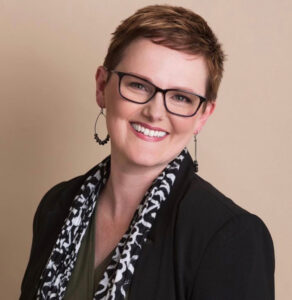The professionals who raise money for nonprofits are leaving and replacing them isn’t easy. That’s bad news for charities
By Ken Sturtz

When Beth Hoey started a career in nonprofit development 30 years ago she knew all the key players in Central New York, many of whom had been in their positions for years.
“It used to be from a development director perspective you knew every development director, you could name them all,” she said. “Right now, I would have trouble naming who is where and I like to think I’m connected to the community.”
Charitable organizations across Central New York are struggling to fill open positions on development teams — whose fundraising is the lifeblood of nonprofits — and as a result of high turnover are confronting a shortage of experienced fundraising professionals.
“For a while there’s been really a crisis in retaining development people,” said Hoey, who currently serves as executive director of the Foundation of the Catholic Diocese of Syracuse.
In the past it was typical to see a few postings at a time on local job boards for open development positions, she said. Today, it’s not uncommon to find a dozen openings at a time, including many development director roles.
Labor shortages have been common as the country continues to experience historically low unemployment, but the dearth of development staff is a widespread problem that existed before the COVID-19 pandemic and has only grown worse since, experts say.
“I think there’s a fundamental misunderstanding on the part of boards and leadership staff of nonprofits of the process of fund development and the culture of philanthropy,” said Elizabeth Quilter, a nonprofit consultant who previously served as chief development officer for the YMCA of Greater Syracuse.
Nonprofits tend to focus on their mission to the detriment of development, she said. Fundraising and development are frequently thought of as secondary or a necessary evil for the organization to do the work that really matters.
But viewing development only in terms of generating revenue can lead nonprofits to hold unrealistic fundraising expectations that are inconsistent with building a sustainable donor program, Quilter said. Deficit fundraising — setting fundraising goals to bridge a gap in the budget — is a common and often short-sighted strategy.

In particular, smaller nonprofits or struggling organizations sometimes hire someone to run their fundraising in the belief that they’ll act as a cure-all, solving the organization’s financial problems in short order.
“People think they will hire a development director, not give them resources needed to actually establish a successful sustainable program and have an expectation that in a short amount of time all of the gaps of resources will be filled somehow,” Quilter said.
In reality building a robust, comprehensive fundraising program can take years. High turnover makes the task even more challenging. Without continuity on development teams it becomes harder to maintain consistent relationships with supporters and work on developing major gifts.
Unrealistic expectations often set development professionals up for failure in the long run.
People beginning their careers typically start off excited and energetic about contributing to a meaningful mission, but burnout and turnover is common once they advance beyond entry-level positions, said Julie Billings, a nonprofit consultant who has worked in fundraising in Central New York for several decades. One industry survey found that the average fundraiser stays at their job for a mere 16 months before leaving for another position.
“The mid-tier of development professionals is missing right now,” Billings said. “There’s a lot of people that have just started or the old-timers of fundraising who have been in it for years.”
The pressure on mid-tier staff from supervisors and nonprofit boards to hit fundraising goals can be intense. One of the hardest aspects of fundraising is that if an individual or team hits their goal the goal often increases the following year, Billings said. And there’s no guarantee that an organization’s supporters can increase their donations accordingly.
Development is rarely a 9-5 job. Successful fundraisers find themselves constantly on the lookout for opportunities because every new contact is a potential donor.
Development professionals are often forced to juggle multiple roles, especially at smaller organizations. It’s not uncommon for someone to be responsible for everything from grant writing, event planning and donor development, to database entry, marketing and direct mail fundraising. At many nonprofits public relations also falls to development staff.
Being overworked and underpaid compared to similar jobs in the for-profit sector causes many to consider a career change, Billings said. The pandemic increased pressure on fundraisers — canceling events, nixing in-person relationship-building with donors and scrambling budgets — while causing many to prioritize a better work-life balance.
“It’s just hard to see that experience being lost, because they’re completely leaving the industry in a lot of cases,” Billings said.
The pressure on development teams is partly the result of more nonprofits competing for the same dollars.
Billings said she’s witnessed the number of nonprofits soar since entering the field decades ago. In 2021, there were more than 90,000 charities registered with the state Charities Bureau.
Nonprofits are confronting an aging donor population in Central New York, she said, further increasing competition. And young people are less likely to donate to charity than their parents’ and grandparents’ generations.
“They’ve been extremely generous throughout the years and the amount of philanthropic dollars that is in Central New York is so impressive,” Billings said. “But donors are declining as the population declines.”
Retaining experienced staff will require wholesale changes in how nonprofits approach development work, experts said. Development teams often operate on shoestring budgets and are frequently one of the first things on the chopping block when budget cuts are necessary.
“It’s not seen as a needed department even though it’s many times one of the only revenue- generating departments in a nonprofit,” Billings said.
Nonprofits need to commit to building sustainable development programs. She said that includes making sure their teams have the resources they need, such as technology and training, so they can focus on the task of building relationships with donors.
Relationships are crucial to retaining donors, something most nonprofits struggle with and don’t put enough energy into, Quilter said. Eight out of 10 first-time donors don’t give to a charity a second time. One of the top reasons given when people stop donating is that they believe the organization didn’t need their support.
That means many organizations end up in a vicious cycle of constantly trying to find new donors to replace the ones they’re losing.
“They don’t believe that having a solid annual fund program and retaining and stewarding those donors is the right answer,” she said. “By looking at it short-term they’re really crippling themselves long-term.”
Instead, many nonprofits put more time and resources into special events and seeking corporate funding. Individual donors represent the largest source of funding for nonprofits – about 70 percent on average – and maintaining that funding stream means building a sustainable development program long-term.
Corporate support typically makes up less than 10 percent of an organization’s funding. Special events, such as auctions, golf tournaments and galas can be a good way to introduce people to an organization’s mission, Quilter said. But they’re some of the most expensive and labor-intensive methods of fundraising and generally don’t help with an organization’s long-term sustainability.
A nonprofit should plan on a three to five-year timeline to build a comprehensive fundraising program, Quilter said, especially since the lead time for major gifts is typically 18-24 months.
In development people too often focus on money instead of the mission, Hoey said, and there’s always a danger of making the process transactional instead of relational.
“People are not ATMs and it’s not about the transaction of the person giving you the money or giving you the check,” she said. “That’s actually one second of years of work and relationship- building.”
Rather than focusing solely on the organization’s needs, Hoey said nonprofits would do well to adopt the philosophy that fundraising isn’t just a means to an end. The process of development and the act of giving should be considered as vital as the work of the frontline employees.
“It’s people knowing they make a difference and being part of something bigger than themselves and all coming together and working together to help our community and that takes relationships,” she said.




